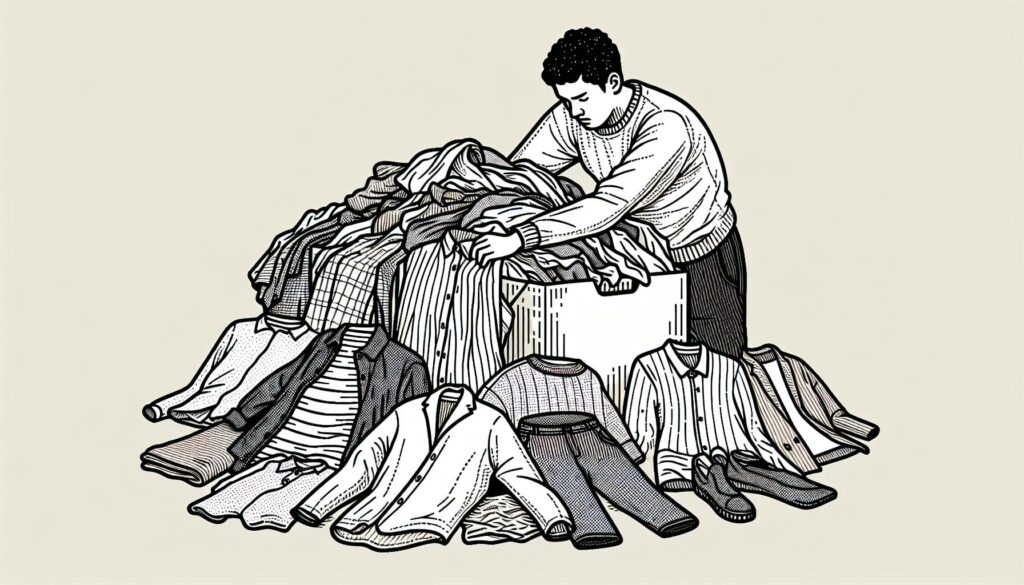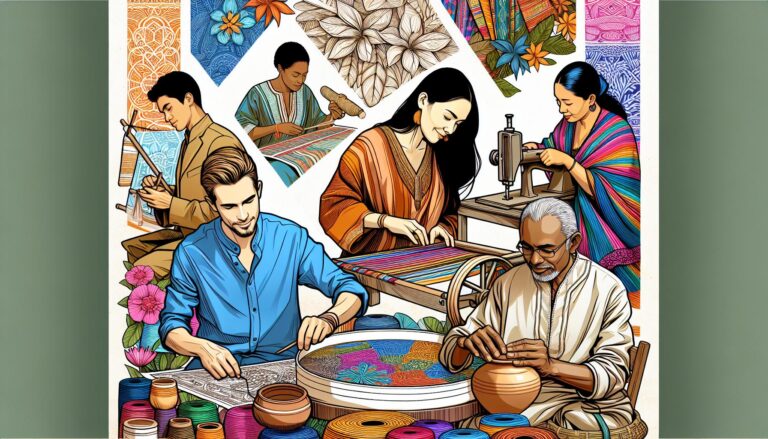Are you looking to declutter your wardrobe and wondering what to do with all those clothes? I’ve got you covered! In this article, I’ll share valuable insights on where to donate and recycle your gently used clothing items.
As a seasoned fashion enthusiast and sustainability advocate, I know the importance of giving your clothes a second life. Join me as I explore the best donation centers and recycling options for your unwanted apparel.
Why Declutter Your Wardrobe?
Decluttering your wardrobe is more than just tidying up your living space; it’s a way to bring organization and clarity into your daily life. Here are a few reasons why decluttering your wardrobe can have a positive impact:
- Saves Time: With a streamlined wardrobe, getting dressed in the morning becomes quicker and easier.
- Reduces Stress: A clutter-free environment can lead to a clearer mind and reduced anxiety.
- Encourages Sustainability: By decluttering and donating clothes, you are extending the lifecycle of your garments and reducing textile waste.
- Helps Those in Need: Donating gently used clothes can benefit individuals who may not have access to new clothing.
- Creates Space: Decluttering your wardrobe opens up space for new items that you truly love and will wear often.
- Promotes mindfulness: Reflecting on what you truly need and wear can help you make more conscious shopping decisions in the future.
When you declutter your wardrobe, you’re not just organizing clothes; you’re making room for a more intentional and sustainable lifestyle.
Benefits of Donating Clothes
Donating clothes not only helps others but also has several benefits for oneself and the environment. Here are some key advantages:
- Reduce Clutter: Donating clothes frees up space in my wardrobe, making it easier to find and appreciate the items I truly love.
- Promote Sustainability: By donating, I participate in extending the lifecycle of garments and reducing textile waste, contributing to a more sustainable fashion industry.
- Support Those in Need: Giving away clothes can directly benefit individuals who lack access to new clothing, helping them meet their basic needs.
- Feel Good: Knowing that my donations are making a positive impact can be a rewarding and uplifting experience, boosting my mood and self-esteem.
Donating clothes is a simple yet impactful way to declutter my wardrobe while making a difference in the lives of others.
Finding the Right Donation Center
When decluttering your wardrobe, one key step is finding the right donation center to ensure your pre-loved clothes are put to good use. Here are some tips on finding the perfect donation center:
- Local Charities: Consider donating to local charities in your community. Not only does this support those in need right in your area, but it also helps reduce the carbon footprint associated with transportation.
- National Organizations: Research national organizations like Goodwill or Salvation Army. These organizations often have a wide reach and can distribute donations to areas where they are most needed.
- Specialized Donations: Some organizations cater to specific needs, such as professional attire for job seekers. If you have items that fit a niche requirement, consider donating to a specialized center.
- Online Platforms: Explore online platforms that facilitate clothing donations. Websites like ThredUp or Give Back Box make it easy to donate clothes without leaving your home.
- Eco-Friendly Centers: Look for donation centers that prioritize sustainability. Opt for centers that recycle or upcycle clothing to reduce textile waste.
By choosing the right donation center, you can ensure that your clothing finds a new home where it’s truly valued and make a positive impact on the environment and those in need.
How to Properly Recycle Clothing
When it comes to recycling clothing, it’s essential to follow proper guidelines to ensure that the items are repurposed efficiently. Here are some tips on how to recycle clothing effectively:
- Check Labels: Before recycling any clothing items, make sure to check the labels for specific recycling instructions. Some materials may require different handling procedures.
- Clean and Dry: It’s crucial to clean and dry the clothes before recycling them. Dirty or damp clothes can contaminate the recycling process.
- Separate Materials: Sort your clothing items into different categories based on material type (e.g., cotton, polyester, wool) as this makes it easier for recycling facilities to process them.
- Find Local Recycling Centers: Look for local recycling centers or textile recycling programs in your area. Many communities have drop-off locations or scheduled pick-ups specifically for clothing recycling.
- Consider Upcycling: If your clothing is in good condition but you no longer wear it, consider upcycling it into something new. This can be a fun and creative way to breathe new life into old garments.
- Donate to Charities: Instead of throwing away unwanted clothing, consider donating them to charitable organizations. Many charities accept gently used clothing and distribute them to those in need.
By following these tips, you can ensure that your clothing is recycled properly, reducing waste and contributing to a more sustainable environment.
Key Takeaways
- Decluttering your wardrobe saves time, reduces stress, encourages sustainability, helps those in need, creates space, and promotes mindfulness.
- Benefits of donating clothes include reducing clutter, promoting sustainability, supporting those in need, and feeling good about making a positive impact.
- When finding a donation center, consider local charities, national organizations, specialized donations, online platforms, and eco-friendly centers for a more impactful contribution.
- Properly recycling clothing involves checking labels, cleaning and drying clothes, separating materials, finding local recycling centers, considering upcycling, and donating to charities to reduce waste and promote sustainability.
Conclusion
In wrapping up, it’s vital to remember the impact our clothing choices have on the environment. By donating to the right centers and recycling responsibly, we can make a positive difference. Checking labels, separating materials, and exploring local recycling options are key steps in this process. Remember, upcycling and donating to charities are great ways to extend the life of your clothes. Let’s continue to embrace sustainable practices in our wardrobe decluttering efforts. Together, we can create a more eco-friendly future.



